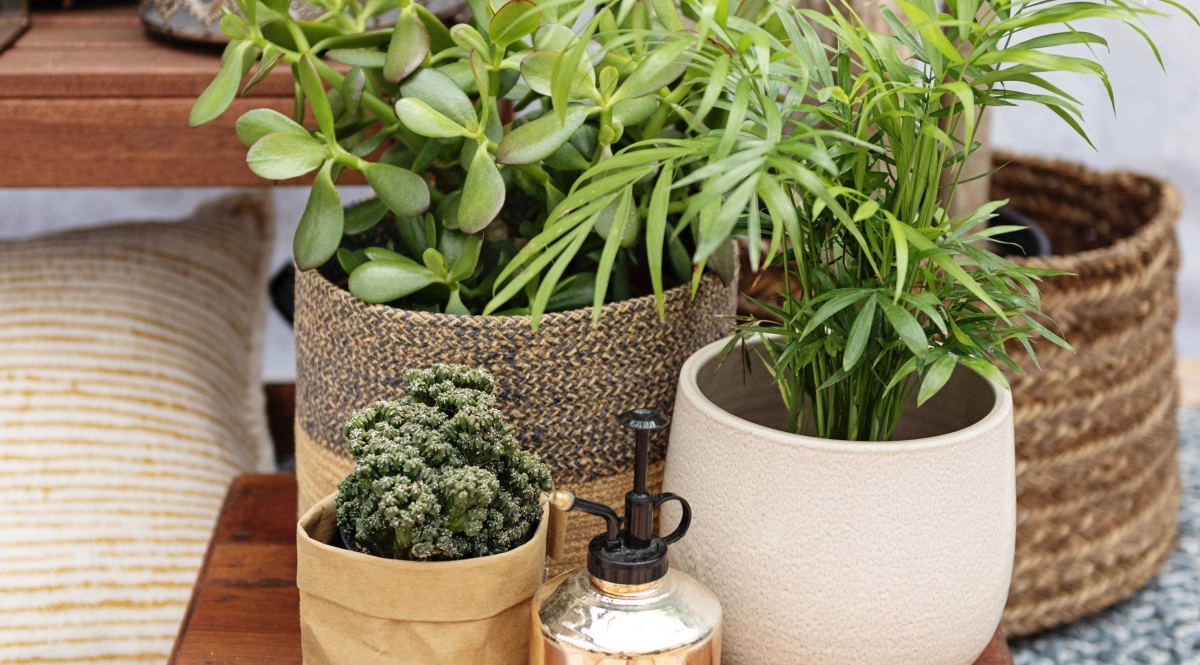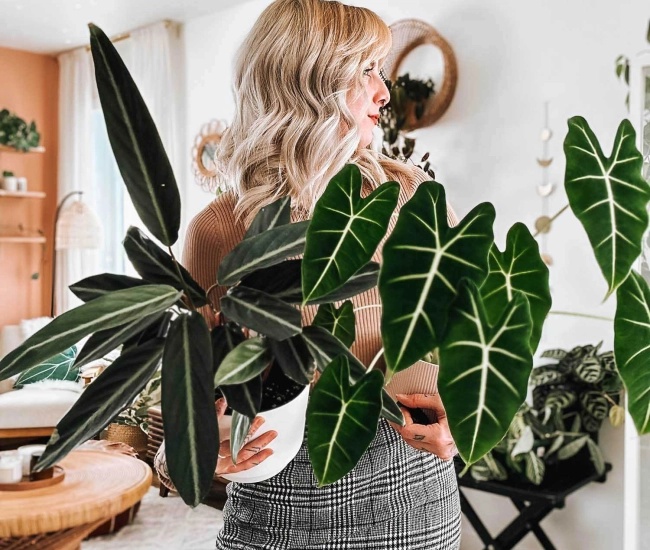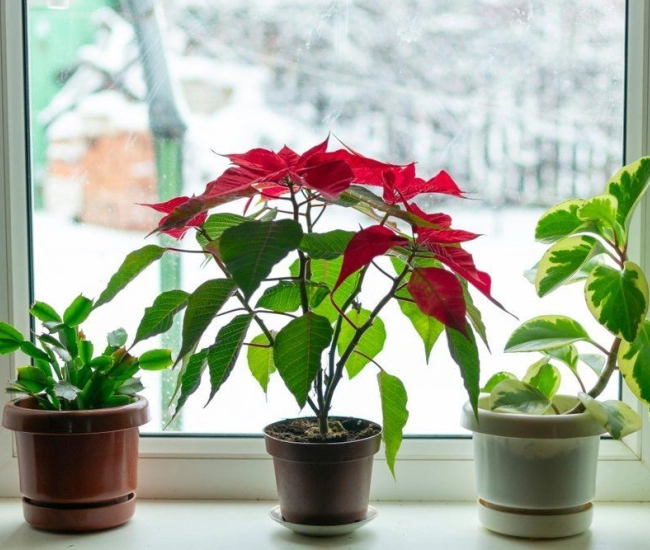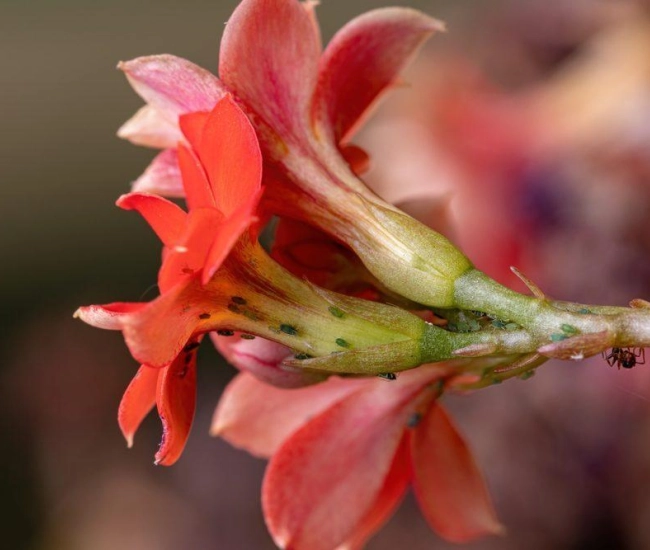
How many times have we heard some people claim that they don't have a green thumb, that all the plants they buy wither after a few months or even a few days? Yet, growing indoor plants is simple. You just need to get to know them.
MAKING THE RIGHT CHOICE
When purchasing your indoor plants, your choice is mainly influenced by the beauty of their foliage, the color and shape of their flowers, their unique growth habit, and sometimes their intoxicating fragrance, not to mention impulse purchases and heartthrobs. Unfortunately, in your enthusiasm, you too often neglect to check the growing requirements of the chosen plants (light, heat, watering, etc.). Take a few minutes to find out if you have the necessary knowledge, as well as a prime location that will meet the plant's needs.
LIGHTING
Most indoor plants need a maximum of light to maintain a beautiful appearance, between 10 and 16 hours of light per day, both winter and summer. In the house, the duration and intensity of light vary according to the season and the orientation of the natural light source. North or east-facing windows offer short-duration indirect light, while west or south-facing windows provide more direct and longer-lasting light intensity. If necessary, the addition of artificial lighting can compensate for the lack of natural light.
TEMPERATURE
Heat is a factor that influences plant growth. As a general rule, an ambient temperature ranging between 18° and 25°C is perfect for growing indoor plants. However, flowering plants benefit from cooler temperatures to prolong their blooming (east orientation).
FERTILIZATION
The fertilization needs of indoor plants vary according to the time of year and the specific needs of each.
Indoor plants appreciate balanced fertilization from February/March to September/October to promote the production of beautiful foliage. A soluble all-purpose fertilizer, such as 20-20-20, is highly recommended. The use of 22-11-22 is also recommended. It is important to follow the manufacturer's recommendations, as the dose for indoor plants is lower than for outdoor plants.
WATERING
The watering of indoor plants varies according to the ambient temperature and humidity. The higher the temperature, the greater the need for water, and the cooler the temperature, the less frequent watering is required. A lack of water or water that is too cold during watering causes stress that can lead to leaf drop and yellowing. Too frequent watering causes the fall of still green leaves and the rotting of stems and roots. It is important to always water with room temperature water deeply and to empty the saucers or cache-pots 30 minutes after watering.
REPOTTING
After a few years in the same container, your indoor plants will benefit from a rejuvenating treatment by repotting them into a larger container of about 5 cm (2 inches). This operation will also allow you to add fresh potting soil containing nutrients. March is an excellent time to repot: the days are longer, and plant growth resumes. However, repotting can be done at any time of the year if the plant shows signs that it needs it:
· Roots are coming out of the drainage holes.
· Watering is difficult and needs to be much more frequent.
· Water no longer seems to be retained by the soil.
· The plant shows discolorations or spots that do not disappear despite fertilization.
Repotting is always done with indoor plant soil to avoid or reduce problems with soil gnats. Be careful! Some plants require soil more suited to their cultivation, such as orchids and cacti/succulents.
TOP-DRESSING
When the plant has become too large to change the container, it is suggested to proceed with top-dressing. Simply scrape the surface of the soil to remove a layer (5 to 7 cm) and replace it with fresh soil. Top-dressing allows for the renewal of part of the soil to ensure healthy growth.
NOT JUST FOR BEAUTY…
Thanks to their impressive purifying properties, indoor plants are true ecosystems that help improve the air quality of our homes, as well as promote relaxation and reduce stress.
HOW DO THEY DO IT?
It's by using the phenomenon of photosynthesis that they manage to purify the air in our homes.
Photosynthesis, the process that allows the plant to grow, uses CO2 (a greenhouse gas) and produces O2 (oxygen) which we need to breathe. In addition, plants have the ability to filter certain pollutants present in the air such as VOCs (volatile organic compounds) which can come from building materials, paint, or household products.
PRUNING
When the plant is too tall, imposing, or has lost some of its leaves, pruning may be necessary.
A good pruning will stimulate the development of new branches and give a denser and more compact plant.
During the growth period, from March to September, select the branches to be cut back and prune them 20 to 30 cm from the ground, below a node. You will quickly see new shoots appear at the leaf axil. But be careful: if it's a flowering plant, wait until after blooming to prune.
With these tips, your plants will only be more beautiful!
Tips and advice



